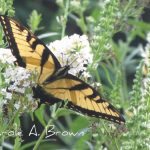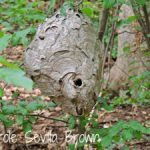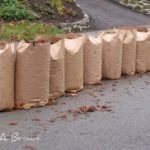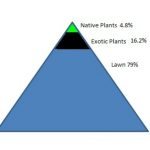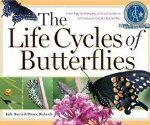I’ve always been fascinated by food webs, the cycle of life, and the ecosystem of a garden and how the different species fit together.
But I was kind of stunned yesterday afternoon when I took the dogs outside and a large bird lifted off from the deck with something big in its talons and flew away so close to my face that I could feel the wind from its wings on my face.
I soon discovered I had inadvertently disturbed a Coopers Hawk taking its lunch break right on my deck (the dogs were not amused at all LOL). I followed the hawk with my eyes and watched it land in the back part of my garden, which is fenced off from the dogs to keep them from playing in my wildlife pond.
I stood in utter wonder and fascination and watched this majestic raptor dismantle a pigeon feather by feather. I was afraid to leave even for a minute to run inside and grab my camera and binoculars, but it soon became apparent that this process would take some time, and the need for my camera soon overcame everything else.
This Coopers Hawk lunch break ended up lasting over two hours, and I stood in rapt attention the entire time. I had never before witnessed such an event at such close range, and I was totally intrigued by the whole sight.
Now before you get upset with me, I too am saddened when I see evidence that hawk or other raptor has managed to nab one of my beloved Chickadees. But this is part of the cycle of life in the wildlife garden. And Hawks have to eat, too.
The food web that we create in our habitat gardens is a cycle of life. The snakes eat the mice, the Robins eat the worms, the caterpillars munch on our plants, the Swallows eat mosquitoes and so do the bats. And the Coopers Hawks eat the pigeons.
Needless to say, I completely forgot about the lengthy to-do list waiting for my attention. I got absolutely no work done at all while Mother Nature’s Drama was taking place right in my own garden, kind of like Wild Kingdom up close and personal!
More about the Coopers Hawk
The Coopers Hawk, also known as Accipiter cooperii, is a species of bird of prey that is native to North America. This majestic predator is well known for its aerial hunting skills and striking appearance. In this blog post, we will explore the Coopers Hawk in detail, including its physical characteristics, behavior, and habitat.
Physical Characteristics
The Coopers Hawk is a medium-sized bird, with a length of around 16-24 inches and a wingspan of around 24-35 inches. It has a chunky, broad-chested body with short, rounded wings and a long, narrow tail. The adult Coopers Hawk has a distinctive appearance, with a blue-grey back, a rusty-red tail, and a pale underbelly. Juvenile birds are similar in appearance, but have a streaked underbelly and a brownish-grey back.
Behavior
The Coopers Hawk is a solitary bird that is most active during the day. It is an excellent hunter, preying on birds and small mammals. The bird’s hunting technique is unique, as it uses its powerful legs and talons to strike its prey from above. The Coopers Hawk then uses its sharp beak to kill its prey, making it one of the most skilled aerial predators in the world.
Habitat
The Coopers Hawk is found throughout North America, inhabiting a wide range of habitats, including deciduous and coniferous forests, suburban areas, and even parks. The bird prefers areas with dense tree cover, where it can hunt and nest in relative safety. During migration, the Coopers Hawk can be found in a variety of habitats, including forests, wetlands, and grasslands.
What dramas are taking place in your wildlife garden?
More From Ecosystem Gardening:
Submit your review | |


